In a breakfast rut? It’s time to shake things up. Say hello to breakfast options that don’t include eggs. Whether you’re looking to add more diversity to your diet—or need a budget-friendly replacement—let’s dive into healthy no egg breakfast ideas. From antioxidant smoothies to hearty veggie bowls, I’ve got you covered. These simple yet creative recipes will leave you feeling energized and ready to tackle the day. They’re family-friendly, too! Although high-quality eggs are incredibly nutritious, it’s always beneficial to add more variety to your plate. To spark inspiration, I’m sharing balanced, nutrient-dense breakfast meals. Best of all, they’re economical, easy to prep, and taste delicious.
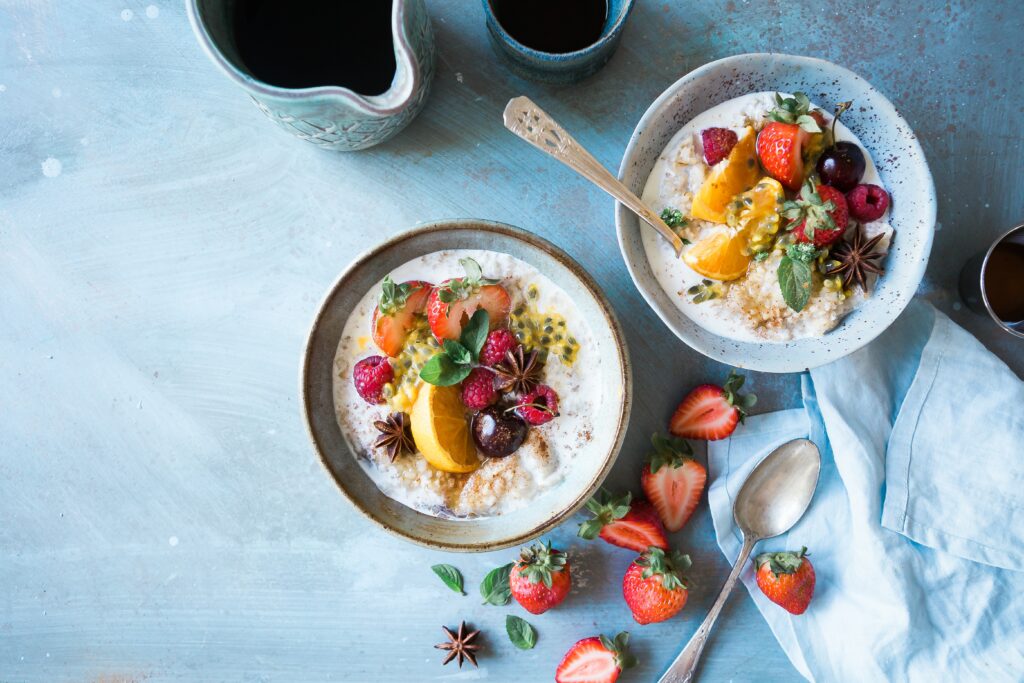
Are eggs healthy?
Yes! Eggs are a fantastic source of vitamins A, D, and B12—as well as choline, an essential nutrient for a healthy metabolism, pregnancy, and child development. Chicken eggs are also an affordable source of protein. While they’re naturally high in cholesterol, the cholesterol in eggs doesn’t seem to raise cholesterol levels—the way some other foods (those high in trans and saturated fats) do. In fact, research shows that most of the cholesterol in the body is made by our liver—not, necessarily, the food we eat.
If you’re at risk for chronic heart disease or illness, consult your physician before adding eggs to your diet.
Where can you find local eggs?
Need your egg fix? Want to support a local farm? Take to Farmish or Local Hens. Supporting your local farmers, through a CSA box, is another way to find economical eggs!
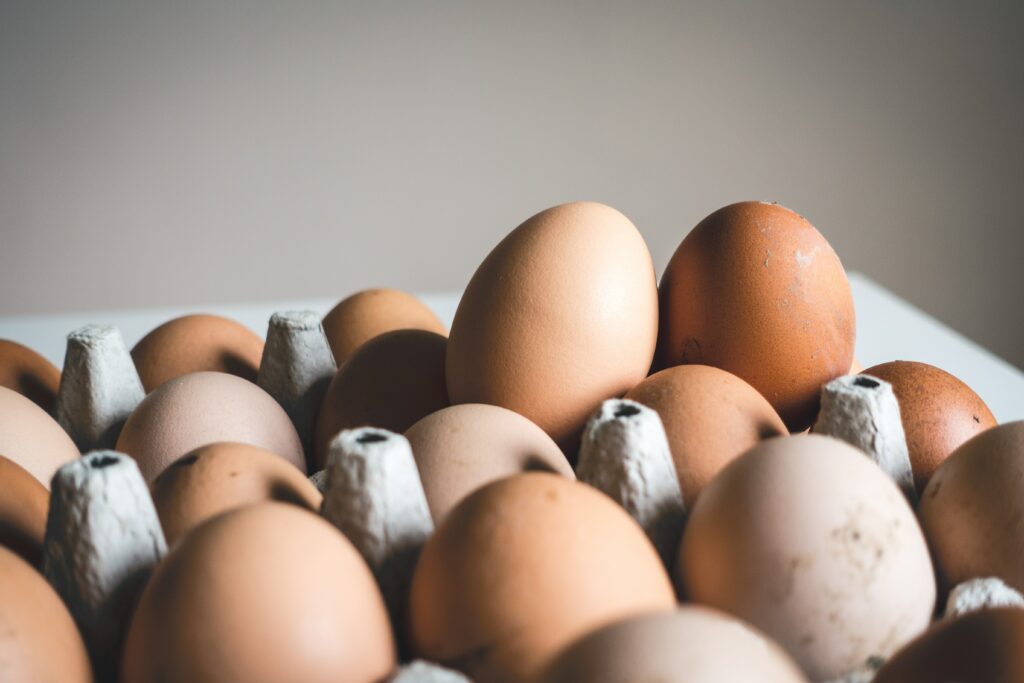
Why You Should Prioritize Protein
A healthy breakfast consists of a balanced mix of nutrients, but it’s especially important to add protein to your plate. It provides numerous health benefits—including weight management, muscle growth and repair, cognitive function, and blood sugar regulation.
Provides essential nutrients
Protein is a rich source of essential nutrients such as iron, zinc, and vitamin B12. These nutrients are necessary for various physiological functions in the body. Eating a protein-rich breakfast can help to ensure that the body is receiving the necessary nutrients for optimal health and well-being.
Helps with weight management
Protein is the most satiating macronutrient, increasing feelings of fullness. A protein-rich breakfast can help reduce cravings for sugary and high-fat foods, making it easier to maintain healthy body composition. Studies have also shown that those who eat a high-protein breakfast tend to consume fewer calories throughout the day, leading to better weight management.
Supports muscle growth and repair
Protein is essential for building and repairing muscles, which is particularly important for building lean muscle. We also need protein for healthy skin and nails! The collagen and amino acids (found in whey protein) help maintain skin’s elasticity and firmness.
Helps to regulate blood sugar levels
Eating a protein-rich breakfast can help to regulate blood sugar levels, which is particularly important for individuals with type 2 diabetes. Protein slows down the absorption of carbohydrates in the bloodstream, which helps to prevent spikes in blood sugar levels. This can help to reduce the risk of developing type 2 diabetes and other metabolic disorders.
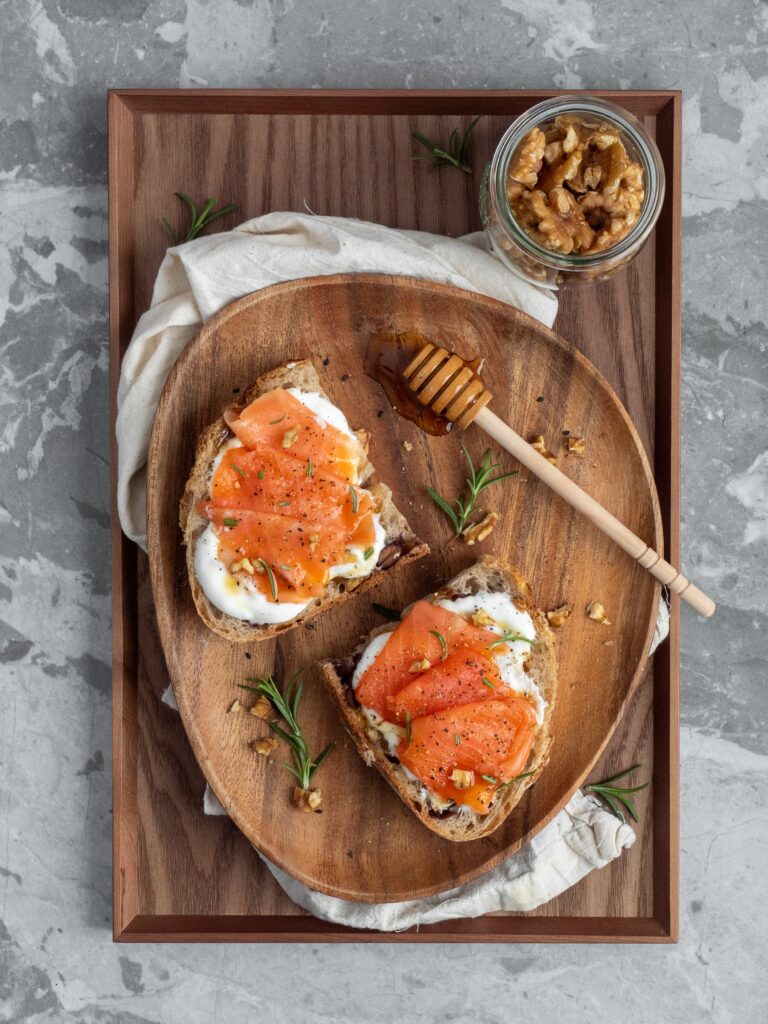
These BREAKFAST FOODS SPIKE BLOOD SUGAR
Before we jump into healthy no egg breakfast ideas, let’s talk about breakfast foods that spike blood sugar. Unfortunately, many popular breakfast foods are loaded with sugar. And sugar causes blood glucose to spike. In turn, this sends your energy, motivation, and mood on a rollercoaster. Not to mention, long-term issues, i.e. hormone imbalance. Below are a handful of common breakfast foods that lack substantial nutrients to keep you full and satiated.
1. NON-FAT YOGURT
It’s time for breakfast. You quickly throw together a bowl of low-fat yogurt and sliced banana. On the side, you sip a cup of coffee with oat milk. This breakfast has virtually zero healthy fats, minimal fiber, little protein, and is high in carbohydrates. You’re basically sending your blood sugar soaring. Thankfully, it’s not the 90s anymore. Fat-free isn’t healthier. Full-fat, for many reasons, is where it’s at. If you tolerate diary, opt for full-fat Greek yogurt. It’s an excellent source of protein and probiotics.
2. CEREAL AND GRANOLA
Despite how they’re marketed, most whole grain cereals (and granola) spike blood sugar—particularly if they don’t have a decent amount of fiber. This, for example, is a delicious granola. However, a mediocre serving size boasts 12 grams of sugar. Instead, opt for a lower-sugar, high-protein option. My favorites: Lovebird, Three Wishes, Love Grown, Purely Elizabeth, NuTrail, or Nature’s Path. When making your breakfast bowl, add a variety of high-fiber / high-fat toppings like shredded coconut, chia seeds, pumpkin seeds, hemp seeds, walnuts, etc.
3. JUICE
Fruits are rich in energy, nutrients, and antioxidants, but all fruit contains fructose—a form of sugar. And when they’re pressed into fruit juices, a majority of their nutrients, including the fiber, are stripped. What’s left? Mostly sugar. However, when eaten whole—and paired with fat and protein—fruits’ natural sugars take longer to digest, minimizing a spike in blood glucose. Fruit juices, on the other hand, are quite problematic. Instead of juicing, consider making a smoothie: add protein (protein powder, hemp seeds, Greek yogurt, etc.), greens, low-sugar fruit, and a source of healthy fats (nut butter, tahini, avocado, etc.).
4. BREAD
Toast can be a part of a perfectly balanced breakfast. However, not all bread is created equal. Really, this comes down to what type of bread you’re eating and what you’re eating it with. For example, this is a popular, organic whole grain bread. But if you look at the nutrition label, each slice contains 5 grams of sugar. By the time you’ve made your peanut butter toast with sliced banana, you’re consuming over 25 grams of sugar. To make this same breakfast more blood sugar-friendly, opt for peanut butter (ingredients: peanut + salt) topped with cinnamon and hemp seeds.
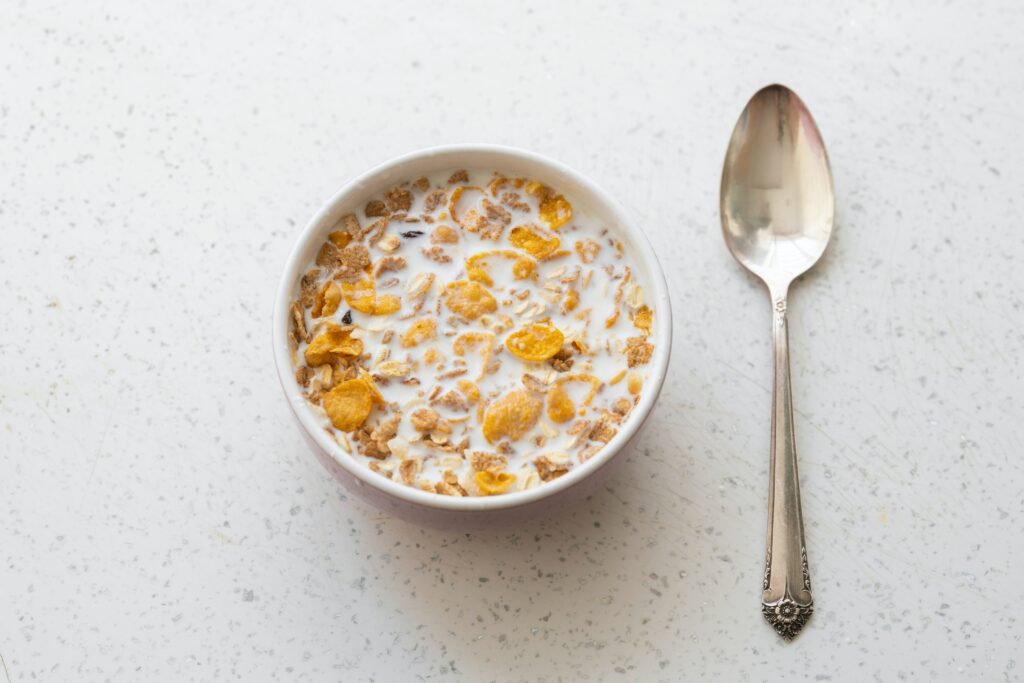
what can i eat for breakfast without eggs?
The sky’s the limit. Make a satiating smoothie. Whip together organic oatmeal (for a boost of nutrients, toss in chia seeds and a scoop of protein powder). Nosh on a bowl of Greek yogurt + ground flaxseed + homemade granola + berries. Make breakfast tacos with sautéed veggies + avo + turkey sausage. Opt for vegan pancakes. I also love making chia seed pudding with berries and nut butter. There are various reasons why you may need to find an egg substitute: allergies, dietary preferences, current egg shortage, and inflation—but rest assured, there are many nutritious and convenient options!
What is a healthy substitute for eggs?
This depends on what you’re making. For baking, try applesauce, mashed banana, or make a flax egg (1 tablespoon ground flax + 2.5 tablespoons water). Other options include silken tofu, vinegar + baking soda, yogurt (use 1/4 cup in replacement of an egg), and arrowroot powder. Or—if you’re feeling creative—try aquafaba!
10 Healthy No egg breakfast ideas
Without further ado, below are healthy no egg breakfast ideas. These are protein-packed, rich in fiber, and many are keto-friendly (to help balance blood sugar).
Below, you’ll see that some ingredients have suggested portions. These are meant to be general guidelines. Adjust based on your nutrition needs and hunger.
chocolate antioxidant smoothie
In a high-powered blender, combine 2 scoops chocolate collagen peptides with a large handful spinach, 1/2 cup frozen blueberries, 2 tablespoons tahini, 1 tablespoon ground flaxseed, cinnamon, and milk of choice (cow’s or unsweetened non-dairy).
Berry crunch Cottage cheese bowl
In a bowl, combine cottage cheese (1/2-1 cup) with fresh or frozen blueberries, slivered almonds, and a drizzle of honey. Optional: add a handful of granola and chia seeds.
Cucumber lox Toast
Toast your favorite bread—gluten-free, sourdough, or sprouted grains. Top with chive cream cheese (traditional or non-diary, like Violife), thinly sliced red onion, lox, capers, and a squeeze of lemon. Enjoy with a side of berries.
Lumberjack Hash
In a large skillet over medium heat, cook 2-3 slices bacon. Set aside. Using the leftover bacon fat, sauté grated sweet potato, bell pepper, zucchini, and spinach. Break up bacon and toss back into the skillet to re-warm. Plate and top with grated cheese or avocado. For more protein, sprinkle hemp seeds.
Tofu SRIRACHA BOWL
Layer sautéed spinach with 1/2-1 cup baked tofu (meal prep this!) sliced avocado, chopped green onion, sesame seeds, black pepper, and a drizzle of sriracha.
Vegan Breakfast Tacos
In a skillet over medium heat, add olive oil, thinly sliced red onion, bell pepper, zucchini, spinach, 1/2-3/4 cup black beans, and 1-2 tablespoons taco seasoning. Add a few tablespoons of water to thin the taco seasoning. Meanwhile, warm 2-3 small tortillas in the microwave (or char over a gas stove!). Fill tacos with mixture and top with hemp seeds, chopped cilantro, and lime. Optional: a dollop of non-dairy sour cream.
Overnight oats with kefir
The night before, combine 1/2-1 cup kefir, 1/2 cup rolled oats, 1 tablespoon chia seeds, 1 tablespoon ground flax, 1-2 teaspoons honey, ground cinnamon, berries, and unsweetened coconut flakes in an airtight jar. If the consistency is too thick, add milk! In the morning, enjoy with a drizzle of nut butter.
STRAWBERRIES AND CREAM Yogurt Bowl
With plain Greek yogurt as the base (1/2-1 cup), add sliced strawberries, 2 tablespoons hemp seeds, 1 tablespoon chia seeds, a dash of vanilla, and and a sprinkle of cinnamon. Optional: add a dollop of non-dairy whipped cream.
Chocolate chia pudding
Find the recipe here!
Coconut noatmeal
For a keto / low-carb breakfast option—make this coconut noatmeal (oatmeal, without the oats!). In a small saucepan over medium heat, combine the following ingredients: 1/2 cup water + 2 tablespoons hemp seeds + 2 tablespoons almond flour + 2 tablespoons unsweetened shredded coconut + 1 tablespoon ground flax + 1 tablespoon chia seeds + 1 scoop protein powder +a few drops liquid monk fruit + dash of vanilla.
Cook until thickened, stirring constantly (about 3-5 minutes). Feel free to add berries or a few slices of banana. Serve warm.
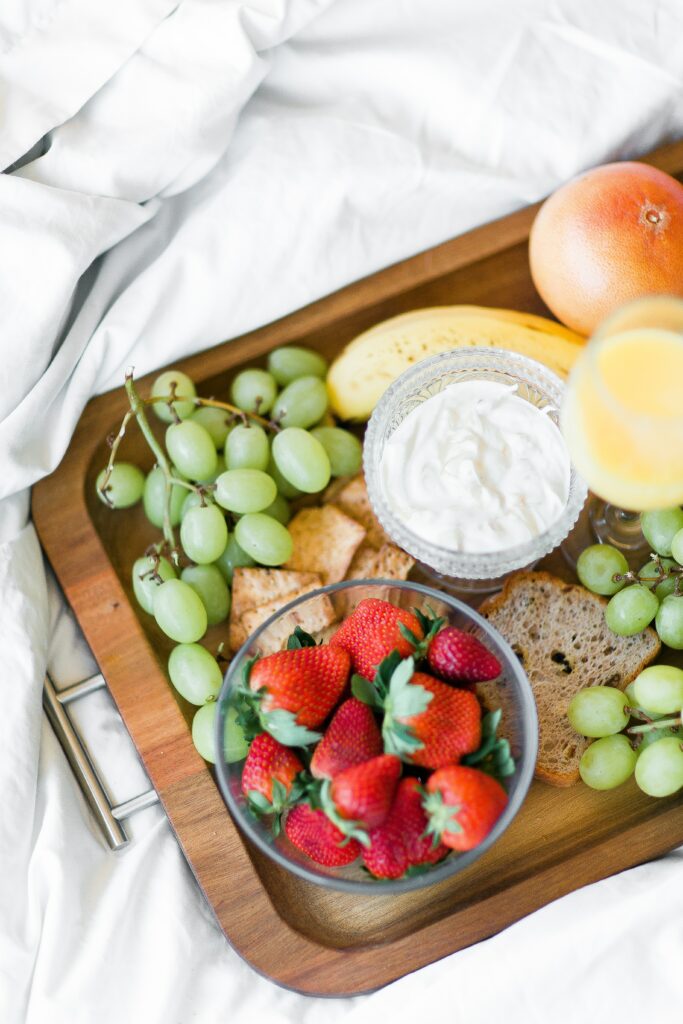
Images courtesy of Unsplash. This article contains affiliate links. Thank you for supporting Wellness with Edie! This article is for informational purposes only. It is not, nor is it intended to be, a substitute for professional medical advice, diagnosis, or treatment and we recommend that you always consult with your healthcare provider.



Leave a Reply